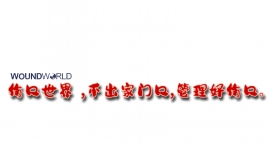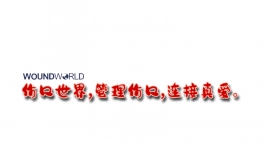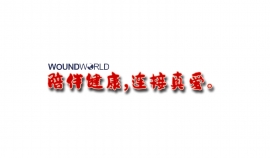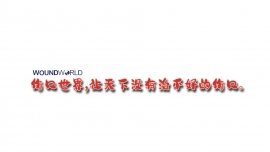
伤口世界
- 星期四, 28 3月 2024
Implementation of skin tone assessment in pressure ulcer prevention
Accurate skin assessment is key to pressure ulcer prevention. It has been shown that a lack of accurate assessment means that patients with dark skin tones are more likely to be diagnosed with higher-category pressure ulcers, leading to poorer outcomes (Oozageer Gunowa et al, 2017). This article highlights training and development carried out at the Christie NHS Foundation Trust in Manchester to incorporate skin tone awareness into aSSKINg bundle assessments and PURPOSE T pressure ulcer risk assessments, using the skin tone tool (Dhoonmoon et al, 2021).
Susy Pramod
Lead Tissue Viability Nurse, The Christie NHS Foundation Trust, Manchester
Jane Mayes
Honorary Tissue Viability Nurse, The Christie NHS Foundation Trust, Manchester; Clinical Education Manager, Essity
Katie Bowling
Tissue Viability Nurse, The Christie NHS Foundation Trust, Manchester
Ged McDermott
Tissue Viability Nurse, The Christie NHS Foundation Trust, Manchester
Key words
- Assessment
- Pressure ulcer
- PURPOSE T
- Skin tone

- 星期三, 27 3月 2024
Physical activity – how much is needed to optimise glycaemic control?
This systematic review and meta-analysis of 126 randomised controlled trials, published in Diabetes Care, identified that the weekly dose of physical activity required to optimise glucose-lowering in people with type 2 diabetes is 1100 Metabolic Equivalents of Task (MET)-minutes per week, and this remained consistent across a wide range of baseline HbA1c values.This is the equivalent of 36 minutes per day of moderate-paced walking, 244 minutes of moderate-intensity aerobic activity per week or 318 minutes of moderate strength training per week. Multicomponent activity (a mix of strength and aerobic activity), strength training and brisk walking were the most effective activities. Achieving the optimal weekly MET dose had greater effects in those with higher HbA1c at baseline, including up to a 1.02% reduction in those with an initial HbA1c >64 mmol/mol, and there was even a statistically significant 0.24–0.38% HbA1c reduction in those with prediabetes (HbA1c <48 mmol/mol) at baseline. These findings suggest that people with diabetes may need more physical activity than in the current generic recommendations of 150–300 minutes per week of moderate-intensity activity or 75–150 minutes per week of vigorous activity. Since we know that many do not achieve current recommendations consistently, helping people undertake these doses of physical activity is likely to need support from a multidisciplinary team, including exercise professionals and coaches, as well as from family and friends.
Pam Brown
GP in Swansea
Citation: Brown P (2024) Diabetes Distilled: Physical activity – how much is needed to optimise glycaemic control?
Diabetes & Primary Care 26: 241–3

- 星期二, 19 3月 2024
Case report: Pancreatic cancer – assessing diabetes in a thin elderly person
David Morris, Probal Moulik
Symptoms of pancreatic cancer often present late, and most are non-specific and thus Misinterpreted. Although a rare condition, the prognosis for pancreatic cancer is very poor, with a 5-year survival rate of 7.3%; however, this improves to 30% for early-stage diagnosis. Prediabetes or diabetes are found in around 80% of people diagnosed with pancreatic carcinoma and, importantly, are often identified a year or two ahead of this diagnosed. Thus, new-onset diabetes represents an opportunity for early detection of pancreatic carcinoma. Through this case report of an older gentleman with new-onset diabetes and a normal BMI, the authors discuss how healthcare professionals can identify people who might be at risk of pancreatic cancer, along with the differential diagnoses, and what actions they should take.
Authors
David Morris, Retired GP and Specialist Doctor in Diabetes, Undergraduate Clinical Tutor, Keele University; Probal Moulik, Consultant Endocrinologist, Shrewsbury and Telford Hospitals NHS Trust.
Citation: Morris D, Moulik P (2023) Case report: Pancreatic cancer – assessing diabetes in a thin elderly person. Diabetes & Primary Care 26: 217–21
Case presentation
Simon, a 76-year-old man with a two-year history of type 2 diabetes, sought a private endocrinology consultation because of ongoing symptoms of weight loss and fatigue. He also reported loss of appetite but denied polyuria and polydipsia. There had been no significant abdominal pain and no change in bowel habit.
Metformin had been commenced shortly after the diagnosis of diabetes but was discontinued because of gastrointestinal intolerance. Dapagliflozin had been tried but was stopped because of continued weight loss. Simon was now taking alogliptin but good glycaemic control remained evasive.
Past medical history: Hypertension; dyslipidaemia; peripheral vascular disease.
Medication: Amlodipine 5 mg once daily; atorvastatin 20 mg once daily; clopidogrel 75 mg once daily; alogliptin 25 mg once daily.
Social history: Retired; non-smoker; alcohol 9 units/week.
Family history: One brother with type 1 diabetes; one brother with diet-controlled type 2 diabetes; one brother with pancreatic cancer.
Examination: Blood pressure 128/67 mmHg; BMI 19.4 kg/m2 . Cardiovascular and respiratory systems unremarkable. Abdomen – palpable liver edge, no other masses.
What is your clinical assessment of the situation?
What further investigations would you consider?

- 星期一, 18 3月 2024
Tirzepatide for management of type 2 diabetes
Tirzepatide (Mounjaro®) is a once-weekly, injectable glucose-lowering medicine newly available in the UK. It is licensed for the treatment of type 2 diabetes and for weight management. This factsheet gives an outline of tirzepatide, its indications, benefits and side effects, as well as providing tips for prescribing. In particular, the article focuses on tirzepatide’s indication for glucose lowering.
Licensed indications
In the UK, tirzepatide has two licensed indications:
1. For the treatment of adults with insufficiently controlled type 2 diabetes as an adjunct to diet and exercise:
● As monotherapy when metformin is considered inappropriate due to intolerance or contraindications,
or:
● In addition to other medicinal products for the treatment of type 2 diabetes.
2. For weight management, including weight loss and weight maintenance, as an adjunct to a reduced-calorie diet and increased physical activity in adults with an initial BMI of:
● ≥30 kg/m2 (obesity),
or:
● ≥27 kg/m2 to <30 kg/m2 (overweight) in the presence of at least one weight-related comorbid condition (e.g. hypertension, dyslipidaemia, obstructive sleep apnoea, cardiovascular disease, prediabetes or type 2 diabetes).
Place in NICE guidelines
To date, NICE has only considered the glucose-lowering indication for tirzepatide. The TA924 guidance1 recommends tirzepatide for treating type 2 diabetes alongside diet and exercise in adults when it is insufficiently controlled only if:
● Triple therapy with metformin and two other oral antidiabetes drugs is ineffective, not tolerated or contraindicated,
and:
➤ BMI is ≥35 kg/m2 and there are specific psychological or other medical problems associated with obesity,
or:
➤ BMI is <35 kg/m2 , and:
■ Insulin therapy would have significant occupational implications,
or:
■ Weight loss would benefit other significant obesityrelated complications.
Lower BMI thresholds (usually reduced by 2.5 kg/m2 ) are recommended for people from South Asian, Chinese, other Asian, Middle Eastern, Black African or African–Caribbean family backgrounds.
This article will focus on the NICE-approved indication of tirzepatide for glucose lowering in people with type 2 diabetes.
Author: Steve Bain, Professor of Medicine (Diabetes), Swansea University Medical School, and Assistant Medical Director for Research & Development, Swansea Bay University Health Board.
Citation: Bain S (2024) At a glance factsheet: Tirzepatide for management of type 2 diabetes. Diabetes & Primary Care 26: [Early view publication]

- 星期五, 15 3月 2024
Transformative strategies in diabetic foot care: a comprehensive approach to lower-limb ulcer recurrence
Andrew Sharpe, Matt Allen and Naseer Ahmad
Diabetes is a pervasive and lifelong condition and poses significant challenges, with one of its most debilitating complications being foot diseases, particularly foot ulceration. This condition not only places individuals at risk for infection but also represents a precursor to severe consequences, such as sepsis and lower-limb amputation (Lipsky et al, 2023). This article delves into the multidisciplinary role that is pivotal in mitigating lower-limb foot ulcer recurrence, a pervasive issue affecting a substantial portion of the diabetic population.
Citation: Sharpe A, Allen M, Ahmad N (2023) Transformative strategies in diabetic foot care: a comprehensive approach to lower-limb ulcer recurrence. The Diabetic Foot Journal 26(2): 40–42
Key words
- Diabetic foot care
- Lower-limb foot ulcer recurrence
Article points
1. Diabetes puts individuals at risk for infection but also represents a precursor to severe consequences such as sepsis and lower-limb amputation.
2. The multidisciplinary role is crucial in mitigating lowerlimb foot ulcer recurrence, a pervasive issue affecting a substantial portion of the diabetic population.
3. In addition, a more active highrisk population could ultimately be a lower-risk population with reduced expected mortality rates.
Authors
Andrew Sharpe is Advanced Podiatrist, Northern Care Alliance NHS Foundation Trust, Salford, Greater Manchester, UK; NIHR ARC-GM PreDoctoral Academic Fellow; Matt Allen is Consultant Podiatrist, Salford Care Organisation, Northern Care Alliance NHS Foundation Trust, Salford, Greater Manchester, UK; Naseer Ahmad is Consultant Vascular Surgeon, Manchester University Foundation Trust and Clinical Director Manchester Amputation Reduction Strategy (MARS)

- 星期四, 14 3月 2024
Practical guidance addressing the national shortage of glucagon-like peptide-1 receptor agonists: From clinical experience
This advertorial has been developed, organised and funded by the Boehringer Ingelheim and Lilly Alliance for UK healthcare professionals.
Dr Rahul Mohan has received an honorarium to support the development of this advertorial.
Jardiance® (empagliflozin) Prescribing information and Adverse event reporting information for Great Britain and Northern Ireland can be found at the end of this document
Rahul Mohan
Dr Rahul Mohan, GP Partner and Principal, Ruddington Medical Centre, Nottingham, GP Lead for the Rushcliffe Community Diabetes Service, Committee Member of the Primary Care Diabetes Society.
Citation: Mohan R (2023) Practical guidance addressing the national shortage of glucagon-like peptide-1 receptor agonists: From clinical experience. Diabetes & Primary Care 25: 101–4
